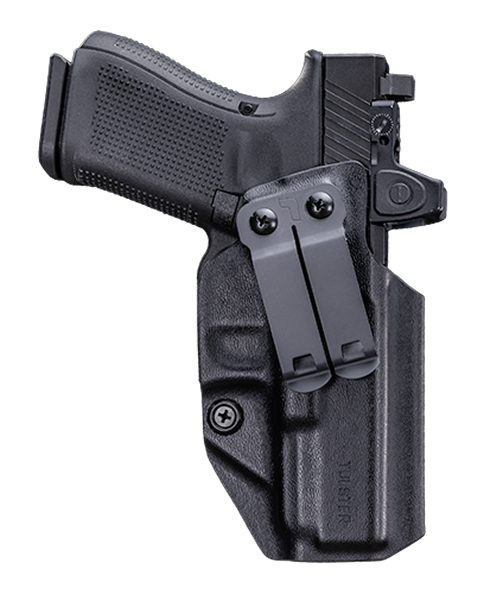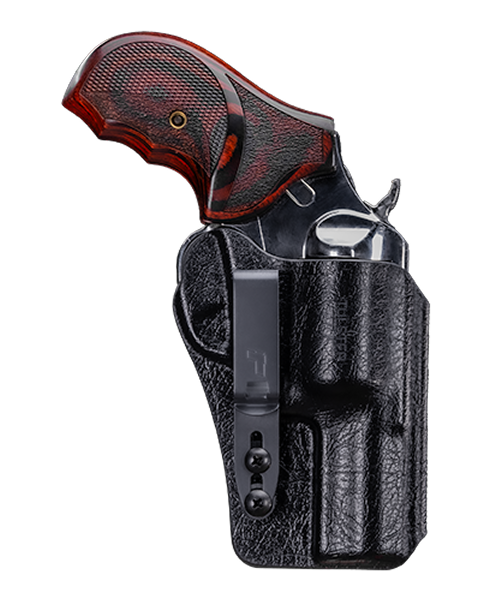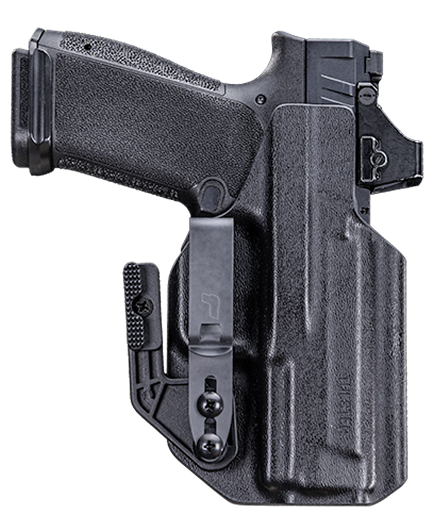Is Appendix Carry The Optimal Carrying Position?
Posted by GunSpot, Tulster on Oct 13th 2022
I first got into concealed carry around six years ago. Since then, I've tried several methods of concealing a firearm. Figuring out what personally worked for me took a while. I went through several guns, holsters, belts, etc., and finally found a solution that worked. I comfortably conceal a Glock 45 every day. But a lingering question for many is, what position is best for concealed carry? There are several good answers to this question, which will ultimately come down to personal preference. However, there are multiple factors to take into consideration.
Ultimately, the best position to carry your concealed firearm is whichever one that works best for you. If you've tried carrying at the 5 'o'clock position and it just doesn't work for you, chances are good you leave your gun at home or in an unsecured position. This is a clear sign that you need to try and find another carry technique. Keep searching and trying various positions until you find the one that works for you. Finding the ideal carry technique may take some time, research, and money to figure out, but it's well worth the investment.
Is Appendix Carry Safe?
Now, I won't beat around the bush. If you ask me my own preference for the best position for concealed carry, the answer will undoubtedly be the appendix carry position. Some gun owners find themselves initially hesitant about carrying in this position due to the location and the thought of what would result from a negligent discharge. However, almost every concealed carry position on the waistline leaves the gun pointed at your person. Therefore, any negligent discharge that occurs during waistline carry could cause an injury. This should not be a cause for concern as long as you carry a quality firearm in a secure appendix carry holster that covers the trigger guard.
If you currently have an unsecured nylon, leather, or some sort of other floppy cheap holster, do yourself a favor and start looking for a replacement. If you want to remain safe, there is no room for this level of potential error in your waistline. I recommend a hard shell Kydex holster that covers the trigger guard and is securely affixed to your waist.
Do I Have the Body Type for Appendix Carry?
There is no denying that appendix carry does come with a handful of challenges. For example, if your body type leans more towards the overweight side, this could be an issue for you. That being said, this doesn’t rule appendix carry out. There are tons of overweight people who carry appendix. Another issue people tend to encounter is that when you sit down, the gun, depending on how long it is, can dig into your leg/groin area. Having a slimmer body type helps to negate this, but regardless of body type, over time, you can appendix carry comfortably.
The Benefits of Appendix Carry
The pros of appendix carry far outweigh the cons. First, you'll be able to draw your firearm much faster. It also works better when you are in a combat situation. If you are fending off an attack, you will be at a disadvantage if you must put your hands behind you to draw the gun from your backside. Reholstering your firearm is also safer and easier in the appendix position. You can easily pull your appendix holster off your belt, reholster your firearm, and put the holster back in your waistband in a matter of seconds. It is also essential to safely and visibly see that your holster is clear of debris before inserting your firearm. Pocket guns and ankle holsters are the easiest to conceal. Still, the appendix carry position lets you easily conceal much larger handguns.
Choosing The Best Appendix Carry Holster
So, which holster is best for appendix carry? It's a widely debated topic; plenty of folks dislike the thought of appendix carry, but nothing beats personal experience. If you're hesitant and unsure if appendix is for you, consider these few pieces of advice. You'll need a solid, stiff, high-quality belt designed for carrying a firearm. We used the Aegis Belt from Ares Gear in our video, which is a solid choice. Most importantly, you need a purpose-driven Kydex holster designed for the specific type of carry you want to do. One great holster option is the Tulster OATH. The OATH is a hard shell Kydex holster with a positive secure trigger-guard-based retention system. The design is purpose-driven for appendix carry, which is certainly why we recommend it. If you're trying to figure out how you might want to carry, start by picking up some concealed carry holsters and a good belt and give it a try!









